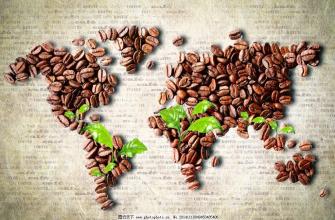Introduction to the quality and taste of rose summer coffee beans in Panamanian jadeite manor
Panama Emerald Estate
The species Geisha was discovered in 1931 in Ethiopia's Guisha Forest and sent to the Coffee Institute in Kenya; introduced to Uganda and Tanzania in 1936, Costa Rica in 1953, Panama in the 1970s by Francesco de Tomba Seven Farm. Mr. Serrazin picked up seeds from CATIE in Costa Rica and started growing rosewood coffee.
Geisha, carrying the power of a hurricane to sweep the coffee world, this coffee revolution is fierce, so that originally occupied the coffee kingdom for a long time a king and a queen ~ Jamaica Blue Mountain, Hawaii Kona also have to retreat, this wild variety originally from Ethiopia, after experiencing countless battles, is now worth all major coffee producing areas, and its best spokesman is from Panama "La Esmeralda" estate. H2-L39 Juliette was the bean that Lord Cat had been looking forward to the most. Generally speaking, rose summer was more common in washing and sunlight. Honey treatment was really rare, but honey treatment always made the original flavor of some raw beans more mellow in Lord Cat's impression. However, I didn't expect that after touching this bean, it was really amazing. First of all, her flavor was not rounded after honey treatment. Instead, it was stronger. The recommended water powder ratio was 1:18 or lighter. The sweet citrus and melon aromas were very full. There was the flavor of Assam black tea. There was a unique sweet feeling and touch brought by honey treatment. It was refreshing and rich. Drinking layer by layer made Lord Cat think of a dignified and noble lady. Peeling off her clothes layer by layer, revealing a beautiful body was generally fascinating.
N2-L39 Perci Red This bean is the cat's favorite taste among the three beans. There is a pear aroma in the raw beans! Very surprising! Sun-treated beans always surprised Lord Cat habitually. Her dry and wet aromas were filled with all kinds of ripe sweet aromas of flowers and fruits, especially tropical fruits, apples, pineapples, mangoes and bergamot. It had a very wild sun aroma, as if it exploded in the mouth, making people incoherent! This bean is recommended for a water-to-flour ratio of 1:18 or less.

Important Notice :
前街咖啡 FrontStreet Coffee has moved to new addredd:
FrontStreet Coffee Address: 315,Donghua East Road,GuangZhou
Tel:020 38364473
- Prev

Costa Rican yellow honey coffee beans flavor description processing quality characteristics of the production area grinding scale introduction
Costa Rican coffee bean yellow cardua comes from a mixture of New World and Kadura, which was first developed in 1949 by Instituto Agromico DE Campinas in Brazil. Yellow catuai, like Red catuai (Catuai rojo), has high disease resistance and is suitable for growing at high altitudes and in windy areas.
- Next

Introduction to the grinding scale of the quality characteristics of Columbia Huilan coffee bean flavor description treatment
Columbia Huilan Coffee Bean Flavor description treatment quality characteristics Grinding scale introduces that Colombia is fortunate to have Atlantic and Pacific ports, which helps to reduce the cost of coffee transportation. In South America, she is the only country with this condition. The main production areas of Colombia are in the central and eastern mountains. The most important plantations along the central mountains are located
Related
- Detailed explanation of Jadeite planting Land in Panamanian Jadeite Manor introduction to the grading system of Jadeite competitive bidding, Red bid, Green bid and Rose Summer
- Story of Coffee planting in Brenka region of Costa Rica Stonehenge Manor anaerobic heavy honey treatment of flavor mouth
- What's on the barrel of Blue Mountain Coffee beans?
- Can American coffee also pull flowers? How to use hot American style to pull out a good-looking pattern?
- Can you make a cold extract with coffee beans? What is the right proportion for cold-extracted coffee formula?
- Indonesian PWN Gold Mandrine Coffee Origin Features Flavor How to Chong? Mandolin coffee is American.
- A brief introduction to the flavor characteristics of Brazilian yellow bourbon coffee beans
- What is the effect of different water quality on the flavor of cold-extracted coffee? What kind of water is best for brewing coffee?
- Why do you think of Rose Summer whenever you mention Panamanian coffee?
- Introduction to the characteristics of authentic blue mountain coffee bean producing areas? What is the CIB Coffee Authority in Jamaica?

